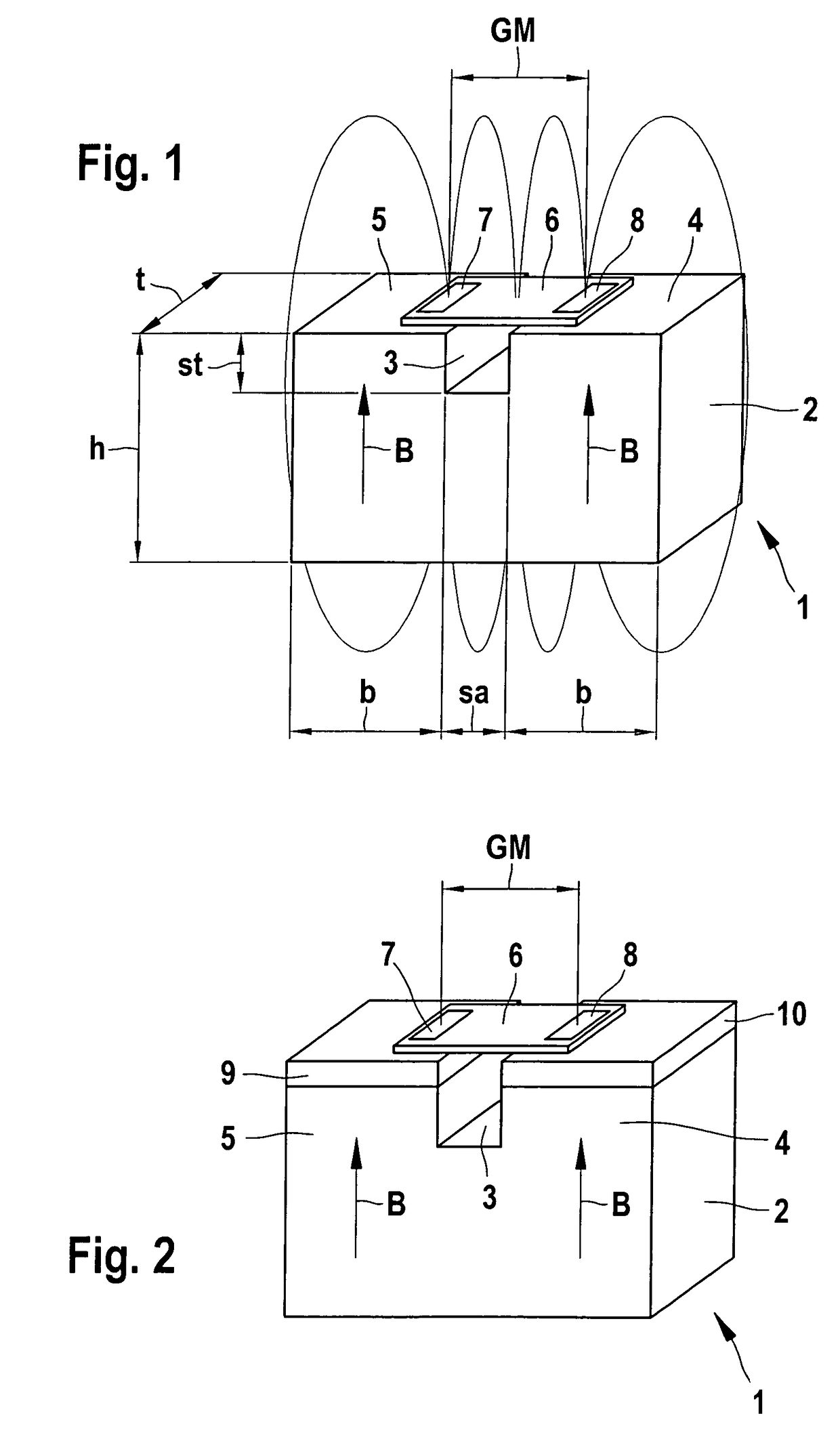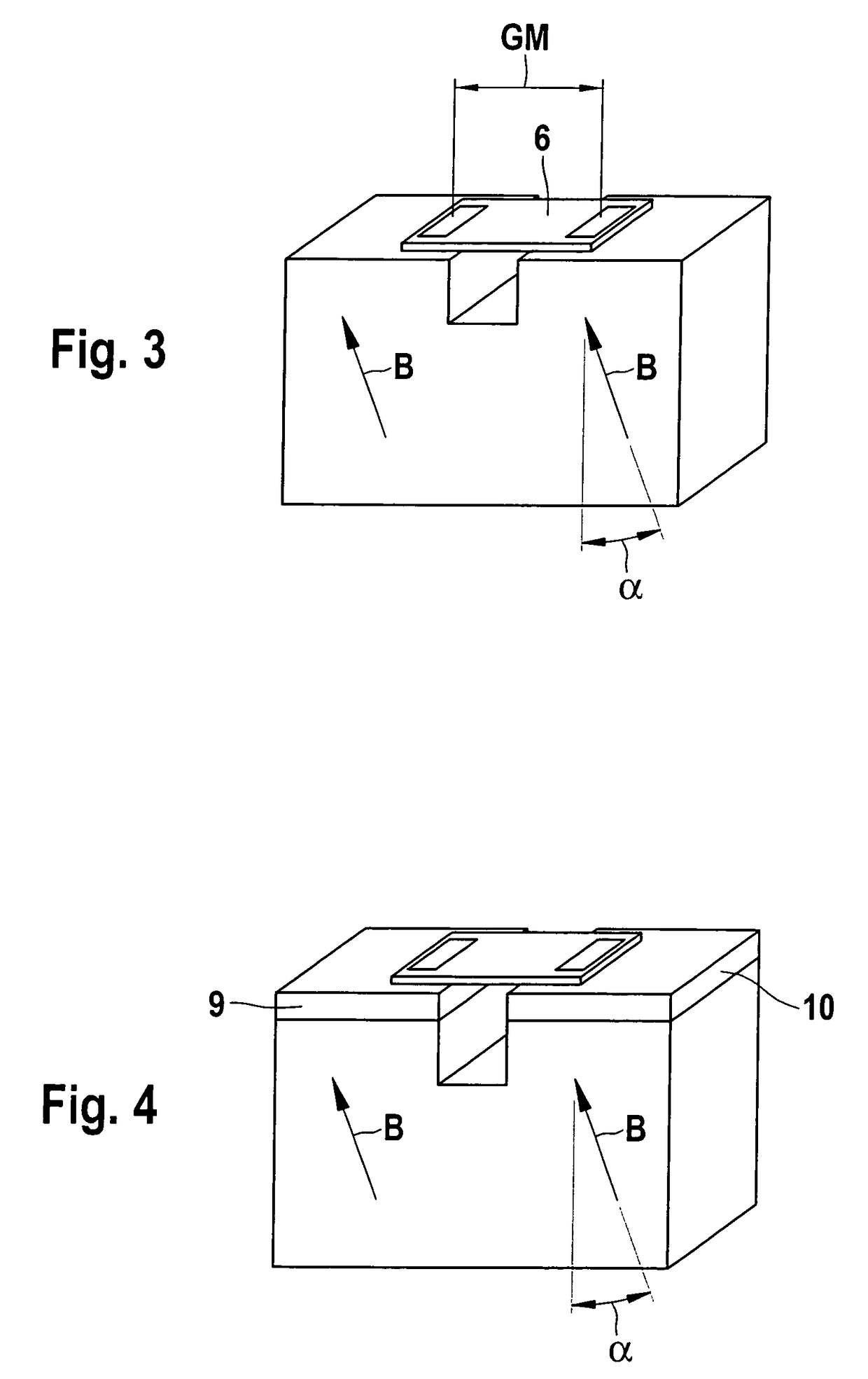Magnet sensor arrangement for sensing the movement of element moving in linear or rotary fashion
a technology of magnetic sensor and linear or rotary motion, applied in the field of magnetic sensor arrangement, can solve the problem of large offset and relatively weak signal, and achieve the effect of minimizing the offset of the output signal of the sensor elemen
- Summary
- Abstract
- Description
- Claims
- Application Information
AI Technical Summary
Benefits of technology
Problems solved by technology
Method used
Image
Examples
Embodiment Construction
[0032]FIG. 1 is a schematic depiction of a magnetic sensor arrangement 1, which has a permanent magnet embodied in the form of a gap magnet 2. On both sides of a gap 3, this gap magnet 2 has regions 4 and 5 that are magnetized in the same direction, whose respective magnetic field B is aligned with the field lines shown here extending in the direction of a sensor 6. The sensor 6 in this case is embodied in the form of an XMR sensor and has two magnetoresistive sensor elements 7 and 8. The sensor elements 7 and 8 are shown in a gradiometer arrangement—which has the gradiometer distance GM—and detect the changes in the respective field gradients that are caused, for example, by a metallic transmitter element, e.g. a gear depicted in FIG. 5, being moved past the magnetic sensor arrangement 1.
[0033]The optimal operating point of the sensor 6 is set via the distance of the individual magnets 4 and 5, defined by the gap width sa and the gap depth st in relation to each other, and can be a...
PUM
 Login to View More
Login to View More Abstract
Description
Claims
Application Information
 Login to View More
Login to View More - R&D
- Intellectual Property
- Life Sciences
- Materials
- Tech Scout
- Unparalleled Data Quality
- Higher Quality Content
- 60% Fewer Hallucinations
Browse by: Latest US Patents, China's latest patents, Technical Efficacy Thesaurus, Application Domain, Technology Topic, Popular Technical Reports.
© 2025 PatSnap. All rights reserved.Legal|Privacy policy|Modern Slavery Act Transparency Statement|Sitemap|About US| Contact US: help@patsnap.com



